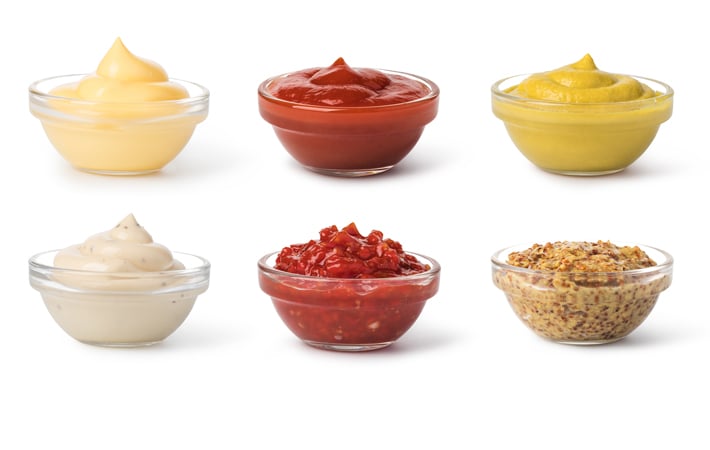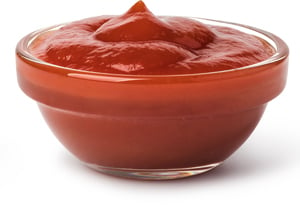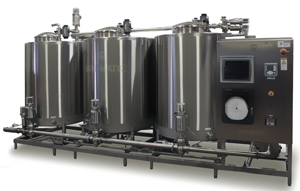
 A Wisconsin sauce manufacturer experienced some serious cleaning issues with their CIP system. The system wasn’t some old, broken down, dilapidated, poorly constructed system. The system itself was mechanically sound. But, because of production upgrades and enhancements, the system no longer "cut the sauce".
A Wisconsin sauce manufacturer experienced some serious cleaning issues with their CIP system. The system wasn’t some old, broken down, dilapidated, poorly constructed system. The system itself was mechanically sound. But, because of production upgrades and enhancements, the system no longer "cut the sauce".
The system functioned properly, in theory, but producing at a higher capacity than originally designed had caused the production lines to simply outgrow the CIP system. The production lines were larger and contained bigger equipment that needed cleaning.
Because the CIP system attempted to cover more ground, it delivered lower flow rates and lower pressure, causing insufficient cleaning and sanitation of tanks, valves, lines, and other equipment. This caused the sauce manufacturer to implement manual cleaning for some parts of the process, taking what was supposed to be an automated process to a time consuming, manual one.
The plant engineer decided to take action and called a Crane Engineering representative to assess the current CIP system and its new requirements.
In some cases, upgrades to CIP systems are feasible options. Oftentimes many of the components are reusable, and the cost of upgrade vs. new are usually favorable. Other times, the cost to upgrade could far outweigh the cost of buying new if the technology is too old (PLC is outdated), it's missing components or is damaged.
According to Sani-Matic, the top reasons manufacturers upgrade their CIP system are:
In this case, the customer was faced with an older system that doesn't meet expectations, but after an assessment, it was clear to the Crane representative that the current CIP system would never live up to the requirements of the new production lines. The old CIP system was simply too small.
The CIP system was carefully analyzed to see if any parts or equipment could find a home in the new system, but it was determined that too many adjustments and changes would have to be made, making this option more cost-prohibitive than starting over with something new.
 Sani-Matic designed a new system, but this time, engineers were sure to plan for increased production in years ahead. A new, 3-tank system was designed with a heat exchanger, pump, angle line discharge strainer, instrumentation, controls, etc. Now they had everything they needed to reap the benefits of enhanced performance and efficient cleaning for the upgraded production lines.
Sani-Matic designed a new system, but this time, engineers were sure to plan for increased production in years ahead. A new, 3-tank system was designed with a heat exchanger, pump, angle line discharge strainer, instrumentation, controls, etc. Now they had everything they needed to reap the benefits of enhanced performance and efficient cleaning for the upgraded production lines.
The new CIP system exceeded the manufacturer’s expectations and they immediately recognized improvement after it was installed. The water temperature climbed faster, chemicals mixed faster, and it cleaned faster too, saving time and the labor of manual cleanings.
If you’ve noticed a change in your CIP system’s performance, it may be time to reassess its requirements and capabilities. Talk to an experienced engineer to discuss your options, and don’t forget to plan for growth!
These Stories on Case Studies
Headquarters and Service Center
Located outside Green Bay, WI
707 Ford Street
Kimberly, WI 54136
920-733-4425
OptiFlow Design and Build Center
1002 Truman Street
Kimberly, WI 54136
920-733-4425
Burnsville Service Center
12265 Nicollet Avenue
Burnsville, MN 55337
952-444-1949
Grand Rapids Service Center
26489 Industrial Blvd
Cohasset, MN 55721
952-444-1949
© Copyright 2024. Crane Engineering. All Rights Reserved. Privacy Policy.